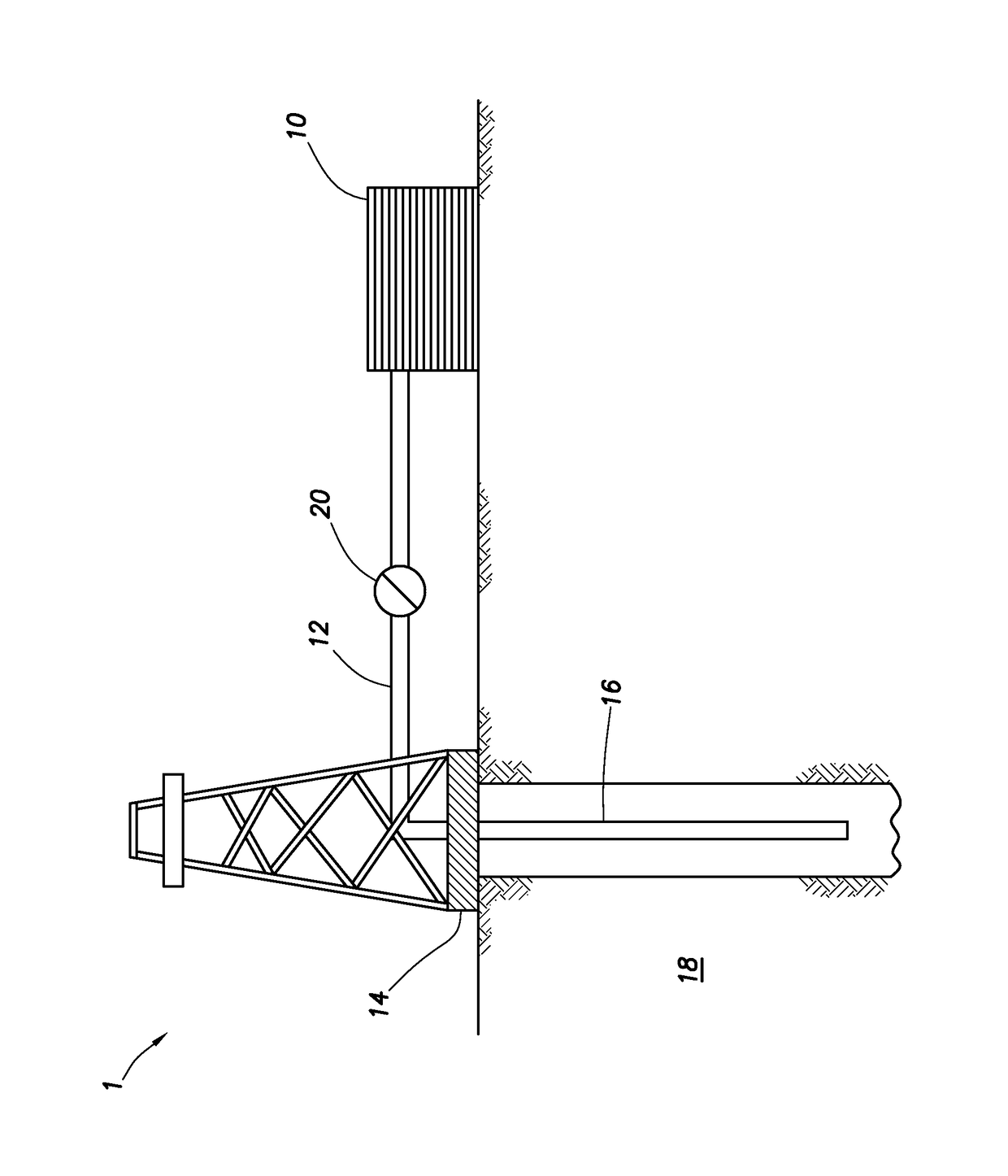Conductivity enhancement of complex fracture networks in subterranean formations
a complex fracture network and conductivity enhancement technology, applied in fluid removal, chemistry apparatus and processes, borehole/well accessories, etc., can solve the problems of insufficient potency to etch channels, insufficient and inability to contribute to or only minimally to enhancing fracture complexity and conductivity
- Summary
- Abstract
- Description
- Claims
- Application Information
AI Technical Summary
Problems solved by technology
Method used
Image
Examples
example 1
[0064]In this example, the permeability of an etched shale core by use of the delayed-release acid according to some embodiments of the present invention was evaluated.
[0065]The shale cores used in this example were comprised of 50% quartz (SiO2), 34% calcite (CaCO3), 8% muscovite / illite, 5% Na-feldspar (NaAlSi-3O8), 2% chlorite clay, and 1% pyrite (FeSs). As a control, a control shale core having dimensions of 2.54 cm×5.08 cm was subjected to permeability testing. The control shale core was saturated using API brine at room temperature and tested using nitrogen gas at a confining pressure of 1200 psi and a backpressure of 200 psi. The API brine described herein was prepared by dissolving CaCl2 (anhydrous, 10 g, 0.09 mole, 2 wt % in final solution) and NaCl (40.0 g, 0.68 mole, 8 wt % in final solution) in deionized water (450 g, 25.0 mole).
[0066]An experimental shale core sample (Core 1) having dimensions of 2.54 cm×5.08 cm was also subjected to permeability testing both before and ...
example 2
[0070]In this example, the permeability of an etched shale core by use of the delayed-release acid according to some embodiments of the present invention was evaluated.
[0071]The shale cores used in this example were comprised of 50% quartz (SiO2), 34% calcite (CaCO3), 8% muscovite / illite, 5% Na-feldspar (NaAlSi-3O8), 2% chlorite clay, and 1% pyrite (FeSs). As a control, a control shale core having dimensions of 2.54 cm×5.08 cm was subjected to permeability testing. The control shale core was saturated using the API brine at room temperature and tested using nitrogen gas at a confining pressure of 1200 psi and a backpressure of 200 psi.
[0072]An experimental shale core sample (Core 2) having dimensions of 2.54 cm×5.08 cm was also subjected to permeability testing both before and after treatment with the delayed-release acid disclosed herein. First, Core 2 was prepared by creating artificial fractures therein by splitting the core along its axial length, to form two halves. The inner f...
example 3
[0076]In this example, the permeability of an etched shale core by use of the delayed-release acid according to some embodiments of the present invention was evaluated at elevated temperatures.
[0077]The shale cores used in this example were comprised of 50% quartz (SiO2), 34% calcite (CaCO3), 8% muscovite / illite, 5% Na-feldspar (NaAlSi-3O8), 2% chlorite clay, and 1% pyrite (FeSs). An experimental shale core sample (Core 3) having dimensions of 2.54 cm×5.08 cm was subjected to permeability testing both before and after treatment with the delayed-release acid disclosed herein. First, Core 3 was prepared by creating artificial fractures therein by splitting the core along its axial length, so as to form two halves. The inner faces of the two halves were saturated with the API brine at 50° C. (122° F.) and thereafter reassembled for permeability testing using nitrogen gas at a confining pressure of 1200 psi and a backpressure of 200 psi, so as to obtain Core 3's permeability before trea...
PUM
| Property | Measurement | Unit |
|---|---|---|
| pressure | aaaaa | aaaaa |
| confining pressure | aaaaa | aaaaa |
| confining pressure | aaaaa | aaaaa |
Abstract
Description
Claims
Application Information
 Login to view more
Login to view more - R&D Engineer
- R&D Manager
- IP Professional
- Industry Leading Data Capabilities
- Powerful AI technology
- Patent DNA Extraction
Browse by: Latest US Patents, China's latest patents, Technical Efficacy Thesaurus, Application Domain, Technology Topic.
© 2024 PatSnap. All rights reserved.Legal|Privacy policy|Modern Slavery Act Transparency Statement|Sitemap


